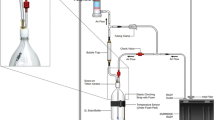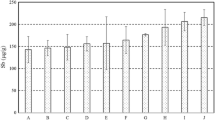Abstract.
Refillable PET containers offer great advantages from an ecological point of view, i.e., to reduce waste from packaging materials. A major concern is the potential public health risks of PET refillable bottles due to possible misuse. In this study, a modified method for determining the chemical inertness of PET bottles involving the interaction of strips from bottle walls with a selection of model contaminants was investigated. A further object was to establish temporally shorter contamination conditions for PET strips, yielding comparable contamination levels as the 14 days/40 °C exposure conditions applied so far. Results showed that substantially shorter exposure times (2–3 days) at higher temperature (60 °C) can be applied to make the overall chemical inertness test procedure as simple and quick as possible.
Similar content being viewed by others
Author information
Authors and Affiliations
Additional information
Electronic Publication
Rights and permissions
About this article
Cite this article
Karamani, A.G., Demertzis, P.G. & Akrida-Demertzi, K. Development of a modified chemical inertness test method for refillable pet bottle material. Eur Food Res Technol 214, 265–270 (2002). https://doi.org/10.1007/s00217-001-0464-z
Received:
Published:
Issue Date:
DOI: https://doi.org/10.1007/s00217-001-0464-z




